Gayle Irwin's Blog, page 16
June 28, 2018
a big reason to spay and neuter: kitten season!
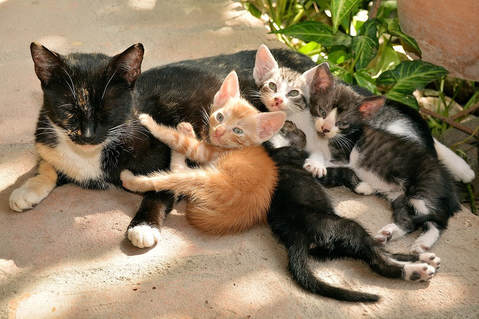 Kitten season – the time of year where animal shelters and rescues are inundated with litters of felines … and it’s going on now.
Kitten season – the time of year where animal shelters and rescues are inundated with litters of felines … and it’s going on now.What will happen to all of these little ones, and the ones that will be born later this year and the ones born to those youngsters also not spayed? Will each one find a special home? Doubtful.
More than one million dogs, cats, puppies and kittens are euthanized in animal shelters annually, according to the ASPCA. Between strays (especially stray cats and kittens) which aren’t reclaimed by owners and animals that aren’t adopted (only about half of the animals that go into shelters are adopted, the ASPCA notes), sadly many animals, especially cats and kittens, lose their lives. That would be less so if more were spayed/neutered, and therefore, not contributing to the population and to the numbers needing to be adopted.
An unspayed female cat and her offspring can contribute several thousand additional cats in a lifetime. Here are a few “cat facts” listed on Georgia’s Fayette Humane Society’s website:An average cat has between 1 and 8 kittens per litter and 2 to 3 litters each year.During her reproductive life, one female cat could have more than 100 kittens.A single pair of cats and their many kittens can produce as many as 420,000 more kittens in only seven years.
Animal shelters and rescue organizations become overwhelmed with the number of kittens brought to them during “kitten season.” This makes for a very good reason to fix one’s pets/cats.
Many myths exist about spaying and neutering, and most are just that: myths. Here are some facts about pets that are fixed:They tend to be better behaved.They tend to be more affectionate.Spayed females don’t attract unwanted, aggressive males nor do they exhibit the nervous behaviors from hormonal changes and cry piteously for a mate.Neutered males are less likely to mark territory (such as your couch!) and they are less likely to roam.Because they don’t roam as much and because they make better house pets, they are less likely to die – from fights, being hit by cars, or getting a disease, like rabies or distemper, from other outdoor animals.
If you have concerns about the surgery and its effect on your pet (the animal does have to undergo anesthesia, discuss these with your vet. No one is more knowledgeable about surgical procedures and the pros and cons of spaying and neutering than your veterinarian.
To learn more about spaying and neutering myths and facts, visit
http://www.humanesociety.org/issues/pet_overpopulation/facts/spay_neuter_myths_facts.html
Lack of homes and pet overpopulation is a serious national, regional, state and community problem –so let’s fix the problem by fixing our pets – we can all help stop the “littering” problem and help our animal shelters and rescues better deal with “kitten season.”
Another way to help during kitten season? Adopt! With a few more days of June left, the month designated as Adopt-A-Shelter-Cat, you are likely to find a wonderful feline friend, whether kitten or adult cat – perhaps at for a discounted adoption fee. Visit your local animal shelter, humane society, or pet rescue organization, and add a purring, furry friend to your household!
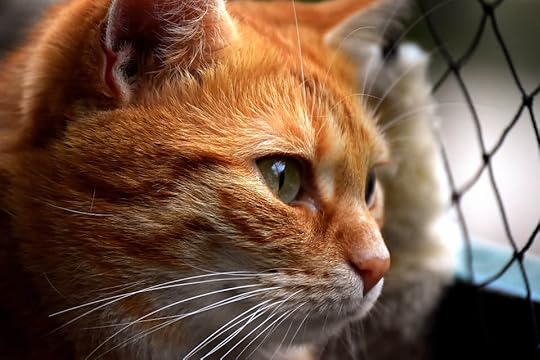
Published on June 28, 2018 04:30
June 20, 2018
why i support pet rescue groups
 “So far, we’ve done 72 cats and kittens and we still have 20 to 30 more to go,” explained the woman who sat across the table from me.
“So far, we’ve done 72 cats and kittens and we still have 20 to 30 more to go,” explained the woman who sat across the table from me.We shared coffee and conversation during my recent visit to Oregon for a family reunion. I learned about the all-volunteer pet rescue organization Hope 4 Paws – Grant County from two different people while visiting relatives in Prairie City, Oregon, and after garnering a contact phone number, I was now learning more about the group. With so many feral, unaltered cats in the community of John Day, this group had secured a grant as well as local donations and was working with an area veterinarian to spay and neuter cats in a mobile home park. Most of the felines were being fixed under a Trap-Neuter-Return program, while many kittens were being vaccinated and altered then adopted to loving families. This small group of people (less than 12 volunteers) made a commitment to their community and to the animals of that community to help animals in need. I left a small donation to help toward the next round of vaccinations and spay/neuter as well as two of my books to use as part of a future fundraising endeavor.
Commitment is critical to pet rescue. For the past 10 years in my state of residence, Wyoming, a pet rescue organization has committed to not just helping pets in need, but to saving lives of animals in the state’s kill-shelters. Black Dog Animal Rescue (BDAR) began saving dogs’ lives throughout the state, fostering them in volunteers’ homes, and adopting them to new loving families. During the past decade, the organization has grown, now also taking in cats, and instituting a partnership with a medium correctional facility to implement a program preparing dogs for adoption behavior and training program called P.A.C.K. – inmates work with the dogs on obedience and some agility training. A recent program graduate named Niffy, now christened Tiffy, was adopted by one of my friends.
Barb began looking for a dog a few months ago and asked me for advice on where to adopt. I gave her several suggestions, including BDAR. She was familiar with the organization from a family member living in Cheyenne, the community where BDAR is located, about a 3-hour drive from our town of Casper. Barb and her husband took a day to drive down after putting in an adoption application for this 2-year-old border collie cross they had seen on BDAR’s website. Barb was looking for a dog which would hike, run, and bike with her, and Niffy appealed to her due to the border collie’s nature of being energetic. She also considered putting the dog into an agility program, another activity for which border collies are skilled. Barb was impressed with both the dog and the organization.
“They were very knowledgeable and answered all of my questions,” she told me after adopting from BDAR. “It’s been a long time since I’ve adopted a dog. It was a pleasant and positive experience, and I’d recommend BDAR and do it again. And Tiffy – I just love her! She was shy the first few days but now she has learned the routine of the house. She is smart, she is affectionate, and she learns quickly. I’m excited to see how she does with agility.”
Why do I support animal rescue? For several reasons, including the fact pet rescue is necessary. With nearly seven million animals going into shelters across the country every year, and the many strays and community cat colonies with little to no medical needs met, rescues are critical to the health and welfare of both community animals and humans. All this takes commitment. Many times, as in the case of Oregon’s Hope 4 Paws, it’s a group of volunteers who make that commitment. BDAR began as an all-volunteer organization, but saving the lives of dogs and cats across an entire state is a huge, fulltime job. Therefore, the group now provides a small staff; but, they continue to rely upon volunteers to help, as most non-profit organizations do. The commitment of people to help animals in need inspires and awes me; therefore, I suppport these organizations who do this work.
Without commitment from staff members and volunteers, where would the animals, and the communities, be? I’m so grateful to these and all the animal rescue organizations for what they do, and I will continue supporting pet rescue groups in various ways as long as I live.
How about you? What can you do to help pet rescue groups in your area? For ideas, visit these websites:
https://barkpost.com/good/13-ways-to-help-animal-shelters/
https://www.mnn.com/family/pets/stories/25-creative-ways-to-help-animal-shelters
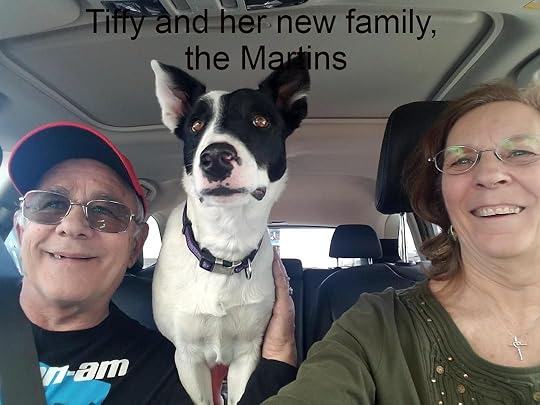
Published on June 20, 2018 07:29
June 12, 2018
CATS MAKE PURRFECT FRIENDS!
 Her golden eyes beckoned me, like a sultry look from Brigitte Bardot. I cautiously approached. She extended a slender front paw between the bars of the cage, as if to shake hands – certainly to vie for my attention. Her round face and lavish, orange and white fur gave her the appearance of royalty. “You’re a princess,” I murmured as I softly stroked her outstretched leg. I then reached between the cage slates to scratch between her ears and under her chin. The diminutive cat responded with a low purr and a subdued ‘mew.” She didn’t belong behind those bars, so I paid her bail and took her home. Her previous owners gave her the name “Ama.” No one knew what it meant or had ever heard such a moniker. A unique name for a princess-like cat. Loving and quiet, Ama settled into her new life with grace and tranquility. Her best friend became a cocker spaniel named Sam, whom I had adopted from the same shelter a year previous. They often cuddled together on the couch by the fireplace. Sam and Ama shared a composed camaraderie, rarely, if ever, spatting over space, food, or attention. If Garfield and Odie had never quarreled, Ama and Sam could have been their stand-ins.
Her golden eyes beckoned me, like a sultry look from Brigitte Bardot. I cautiously approached. She extended a slender front paw between the bars of the cage, as if to shake hands – certainly to vie for my attention. Her round face and lavish, orange and white fur gave her the appearance of royalty. “You’re a princess,” I murmured as I softly stroked her outstretched leg. I then reached between the cage slates to scratch between her ears and under her chin. The diminutive cat responded with a low purr and a subdued ‘mew.” She didn’t belong behind those bars, so I paid her bail and took her home. Her previous owners gave her the name “Ama.” No one knew what it meant or had ever heard such a moniker. A unique name for a princess-like cat. Loving and quiet, Ama settled into her new life with grace and tranquility. Her best friend became a cocker spaniel named Sam, whom I had adopted from the same shelter a year previous. They often cuddled together on the couch by the fireplace. Sam and Ama shared a composed camaraderie, rarely, if ever, spatting over space, food, or attention. If Garfield and Odie had never quarreled, Ama and Sam could have been their stand-ins.So starts a short story I wrote a few years ago about this sleek, amber-eyed kitty I adopted in 1990; the tale is part of my book Tail Tales. I mentioned Ama in last week’s blog, and since June is Adopt-a-Shelter-Cat Month, I wanted to talk more about cat adoption and other programs which help cats – and how we can get involved.
Why do cats make great companions? Here are a few reasons:
Cats are more independent than dogs – they don’t require a person to take them for a walk (although that can be done and does provide both you and your kitty friend some exercise) or a trip to the park to play fetch.Cats can be cuddly – certain breeds/types are more loving and enjoy sitting on laps than others (examples of cuddly kitties include Scottish Fold, Persian, and Ragdoll – Ama was part Ragdoll).They can entertain themselves – toy mice, scratching posts, a window from which to look outdoors: these make great amusements for cats.They don’t bark – so they won’t disturb your neighbors and cause them to call animal control for nuisance complaints.
Ama and I shared life for more than 15 years; she passed in 2006 at nearly 19 years of age. Both she and our mutual dog friend Sam came from the Bozeman, Montana humane society, adoptions that strengthened my resolve to always provide a home for rescued pets.
Every year, more than three million cats enter animal shelters across America. Many are stray, and sadly, only about 5% are reunited with their owners; nearly 1 million cats that come into shelters are killed due to lack of reclaiming strays and lack of cats adopted. This month shelters and rescues around the United States promote cat adoption and reuniting with owners since June is designated as Adopt-a-Shelter-Cat Month. In addition to the strays and the owner relinquishments, this time of year is known as “kitten season,” when pet adoption organizations become overwhelmed with mamma cats and their babies. Spaying and neutering are critical to keeping cat populations down. Additionally, the numerous community cat situations (also known as feral cats, those living in cities, suburbs, and rural areas on their own) adding to that feline overpopulation, the need for Trap-Neuter-Return (TNR) programs is rampant.
There are several ways we can help:
Spay/neuter our cats and educate others on cat overpopulation and the tragic statistics.Help your local animal rescue and/or shelter by volunteering, supporting with monetary and/or supply donations, and attending/promoting their events.Sign up to be a foster parent to help the shelter rescue and save more mamma cats and their babies.Assist with a TNR program – if your town doesn’t have one, talk with others about starting one and promote the idea to community leaders (educate people about such programs if needed).
By helping organizations and programs that help cats, you are helping kitties in need – and making special friends in the process.
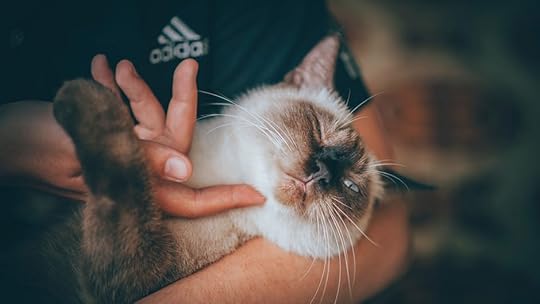
Published on June 12, 2018 11:14
June 5, 2018
The joys and benefits of living with a cat
 I reached my hand between the slots of the cage bars. I knew I shouldn’t, but her amber eyes beckoned. She rubbed her small, round, reddish head against my fist. Her dainty purring, barely audible, captured my heart, and she came home with me later that day.
I reached my hand between the slots of the cage bars. I knew I shouldn’t, but her amber eyes beckoned. She rubbed her small, round, reddish head against my fist. Her dainty purring, barely audible, captured my heart, and she came home with me later that day.Her name was Ama – a strange moniker, but one she kept for the next 16 years we shared. The year was 1991; the place was the Bozeman, Montana Humane Society. Ama and I experienced five moves in the years between adoption and her passing at nearly 19. Through it all, she remained a friendly feline princess, her luxurious long orange and white coat and her delicate Ragdoll breed features giving her that royal appearance. During the many seasons we shared the household, having Ama in my life during times of stress helped calmed me, providing a quiet, nonjudgmental companionship that helped through the eddies of life.
There are many joys and benefits of living with a cat. Studies show pet owners generally lead healthier lives and have less stress. Here are a few benefits of living with a cat:
The simple act of petting an animal helps calm people. Cats often enjoy sitting on their special person’s lap, and the act of stroking their fur provides a sense of tranquility and connection between the person and the cat.The purring of a cat is soothing. No matter your age, the sound of a cat’s purr brings smiles to our faces.Playing with a cat is easier compared to playing with a dog. A simple string or a feather on a pole or stick suffices a cat’s curiosity and sense of hunting – and you can engage your cat from your couch or chair.Cats offer comfort. When you’re physically or emotionally ill, having your cat lay in your lap or next to you in bed provides comfort through companionship.Cats can help reduce blood pressure and cardiovascular disease. Whether you take your cat for a walk on a leash or simply reduce your stress by petting your furry friend, the exercise and lower stress benefit your physical health.
June is Adopt a Shelter Cat Month. Rescue organizations often promote this special month with special adoption rates on cats and kittens. Find your princess (or prince) of a cat at your local shelter or rescue group this month and enjoy the joys of living with a cat – just like I did with Ama.
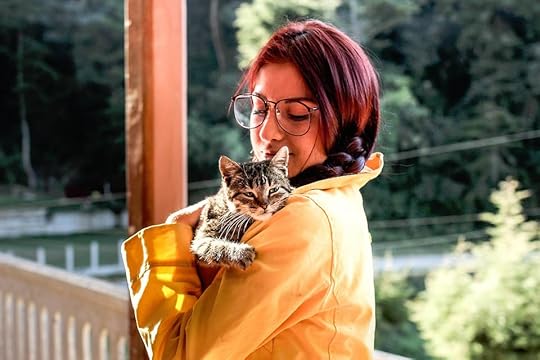
Published on June 05, 2018 05:50
May 29, 2018
are you and your pet prepared? 5 tips for emergency situations
 The water rushed down the street and the sidewalk. The third round of thunderstorms rolled through town, overflowing the neighborhood’s draining system and clogging areas with debris. Sidewalks formed mud piles and car tires stopped rocks and branches. I observed all this from my front porch as hail cascaded from the sky and rain drenched the community.
The water rushed down the street and the sidewalk. The third round of thunderstorms rolled through town, overflowing the neighborhood’s draining system and clogging areas with debris. Sidewalks formed mud piles and car tires stopped rocks and branches. I observed all this from my front porch as hail cascaded from the sky and rain drenched the community.Every year floods, hurricanes, tornadoes, wildfires, snowstorms and other natural disasters hit towns and cities in the U.S. and around the world. Hurricane season officially begins June 1 yet over the Memorial Day weekend communities along the Gulf Coast prepared for a significant tropical storm – about the same time I watched a potential flash flood hit my community in Wyoming. As I stood on my front porch Sunday evening watching water rush like a raging river, I pondered if my family and I, with an entourage of four pets, could safely leave our home if needed.
We all need to be prepared to evacuate our homes in times of emergency. Here are five tips to handling a natural disaster situation:
Create a plan for both sheltering in place and having to leave and shelter elsewhere. Include in that plan where you and your pet(s) will go in case of evacuation.Make sure your pet has identification. Wearing a collar with ID tag is critical. Microchipping is also good in case your pet and its collar/ID tag get separated.Have pet carriers for all your animals and label those with the pet’s name and your name and contact information.Ensure your pet needs. Pack a bag with food and water dishes, plenty of water (in bottles) and food for each animal. And, don’t forget any medications your pet(s) need.Create an information folder. Inside, include your pet’s medical records, such as vaccination and medication information, a photo of your pet, written description, and your contact information.
Creating, and having on hand, a disaster preparedness kit can help a crisis run a bit smoother. Both the federal government’s Emergency Management Agency (FEMA) and the ASPCA offer more tips on caring for your pets during an emergency. Visit these websites for further information and to help you create a disaster plan and an emergency preparedness kit.
https://www.ready.gov/animals
https://www.fema.gov/media-library-data/1392389819026-75460345a2f4adcc5418a1da7cb25eef
/2014_PrinterFriendly_PetOwners.pdf
https://www.aspca.org/pet-care/general-pet-care/disaster-preparedness
In addition to the official start of hurricane season, June is National Pet Preparedness Month. Are you and your pet prepared for a natural disaster? Following the above-mentioned tips and visiting websites noted above, you can be.
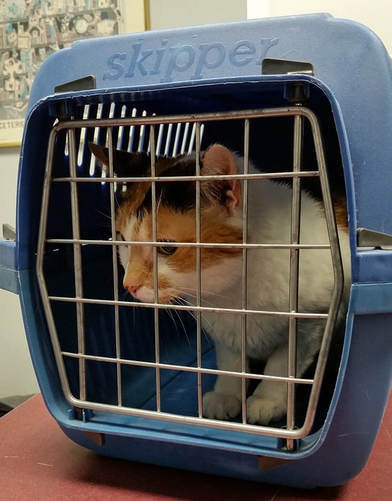
Published on May 29, 2018 05:00
May 21, 2018
honoring animal heroes
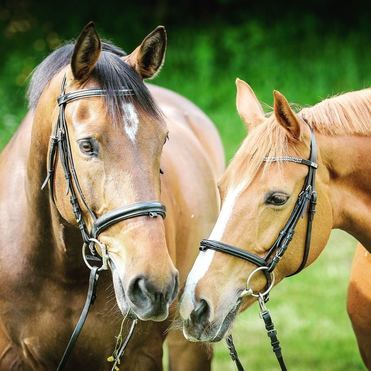 America’s Memorial Day arrives on Monday, May 28. This is a time to remember the sacrifice of the country’s military men and women, those who gave the ultimate – their very lives. Over the course of time, more than 600,000 service men and women have died during times of war, including more than 2,200 in Afghanistan, more than 58,000 in the Vietnam War, nearly 37,000 in Korea, and more than 530,000 during World Wars 1 and 2. In addition to military personnel, civilians were also killed during these conflicts.
America’s Memorial Day arrives on Monday, May 28. This is a time to remember the sacrifice of the country’s military men and women, those who gave the ultimate – their very lives. Over the course of time, more than 600,000 service men and women have died during times of war, including more than 2,200 in Afghanistan, more than 58,000 in the Vietnam War, nearly 37,000 in Korea, and more than 530,000 during World Wars 1 and 2. In addition to military personnel, civilians were also killed during these conflicts.Animals have been, and still are, used during wartime. Horses and dogs have primarily served, and plentiful numbers of them have lost their lives. Other animal species, including pigeons, dolphins, camels, and mules have also served during wartime. Some carried messages, some carried humans – all have worked, and continue to work, in service to their country’s forces. They are often the unsung heroes of war. The U.S. War Dog Memorial, located in New Jersey, was originally established in 2006 to honor dogs and their handlers of the Vietnam War. However, it’s become the symbol of dogs who have served, and continue to serve, the U.S. military in all conflicts. Some states, including Tennessee and Colorado, also have, or plan to have, a war dog memorial.
Times of war are not the only time that animals serve and are looked upon as heroes. There are plenty of incidents in which dogs, cats, and other animals have saved humans. For example, Kahn, a Doberman who had only been with his adopted family for a few days, saved a toddler from a snake, and Pudding, a rescued cat, who saved his owner experiencing a diabetic seizure. Animals save people from drowning, from intruders, and from illness and accidents. Many do these heroic acts at the cost of their own lives, including K9 police dogs and military service dogs.
As we take time during Memorial Day weekend, especially on the day itself, to remember the people who gave their lives for our country and our freedoms (and the freedoms of others), let us also remember the numerous animal who also have given their lives in service. Whether in the military, on police forces, or living in homes with human families, these animals showcase devotion, loyalty, love, and friendship – character traits of noble and beloved animal heroes.
The American Humane Association presents the Hero Dog Award later this year. Visit their website to learn more about the dogs up for the award in 2018; you can cast your vote before July 11, 2018: http://herodogawards.org/vote/.
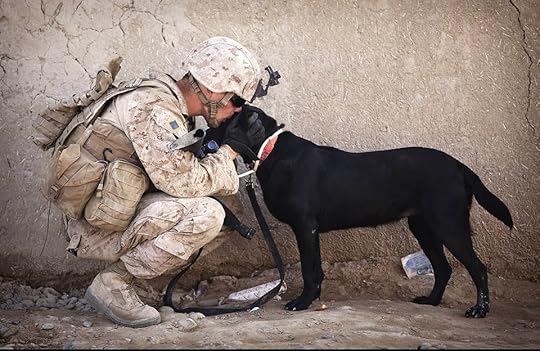
Published on May 21, 2018 17:50
May 16, 2018
specially-abled pets inspire
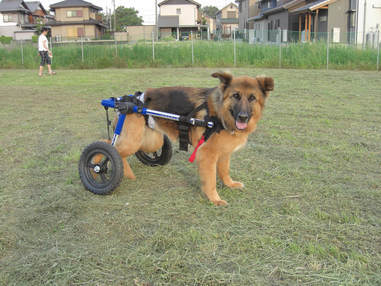 Earlier this month, a day was dedicated to pets with special needs, also known as “specially-abled” pets. Once termed “disabled,” that label infused “not able,” and though pets that are blind, deaf, three-legged, diabetic, etc. may require additional care and patience, these animals are first and foremost dogs and cats, just like any other.
Earlier this month, a day was dedicated to pets with special needs, also known as “specially-abled” pets. Once termed “disabled,” that label infused “not able,” and though pets that are blind, deaf, three-legged, diabetic, etc. may require additional care and patience, these animals are first and foremost dogs and cats, just like any other.I lived with a blind dog for more than a decade. Her name was Sage, and she taught me many valuable life lessons. In fact, my authorship sprouted because of her. We visited schools, libraries, and bookstores, and she inspired many others with her abilities despite her disability. Other specially-abled pets do the same – they are amazing in how they adapt to their limitations. For example, given the opportunity to have a K-9 cart, pets with immobile back legs race around in play and fun just like an animal with all four functioning legs. I’ve even seen dogs with short front legs adapt to using their hind legs for propulsion, much like a kangaroo.
Their courage, perseverance, joy, and adaptability are inspiring. Sadly, many blind, deaf, two-legged and other specially-abled pets are euthanized because they are perceived as less adoptable; many consider it “more humane” to kill them. Do we perceive the same of people who are blind, deaf, or in wheelchairs?
A wonderful blog post at Pets for Patriots discusses the beauty and joy, as well as some of the challenges, of having a special needs pet. Here’s a link to the post – I hope you’ll take time to read the encouraging words and view photos of some veterans who have specially-abled pets sharing their lives. https://petsforpatriots.org/understanding-the-special-in-special-needs-pets/
Don’t be afraid to adopt a dog or cat with special needs. Not only will you likely be saving a life, but your own life will be enriched by the presence of these loving, fun animals who know no difference between themselves and other pets. Watch this delightful video of a blind and deaf puppy named Piglet, who has learned commands through touch and plays energetically with his canine siblings:
https://www.facebook.com/22Words/vide...www.facebook.com/22Words/videos/194174228067938/
Below is a photo of Sage, my blind dog, navigating stairs. Blind, yes, capable, yes, inspiring, yes!
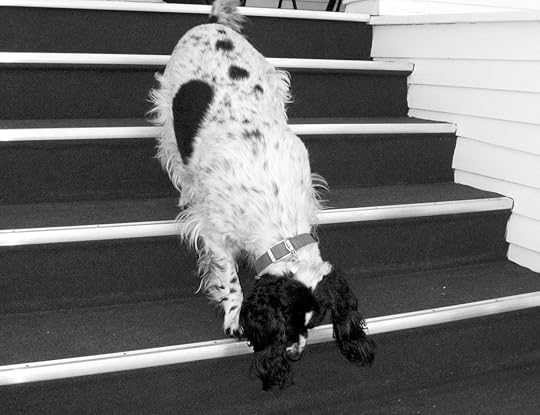
Published on May 16, 2018 07:01
May 8, 2018
be kind to animals week
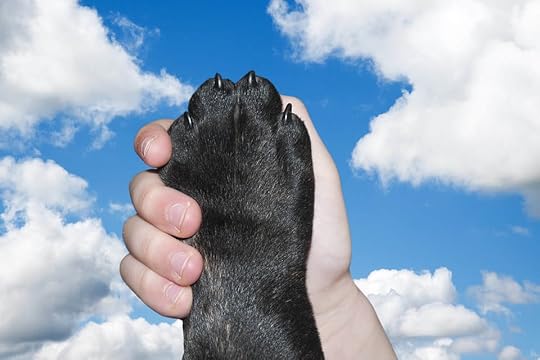 After a full day of school, the ten-year-old, brown-haired girl filled the two dog dishes with kibble and sprinkled water to coat and soften the food and gave a head scratch to each pup as they began to eat. Next, she went to the three rabbit hutches, and refilled food pans and water bottles as needed. She also scooped the cat box every other day and refilled her calico furry friend’s dishes. This was her job – caring for the small animals on the 14-acre Iowa farm.
After a full day of school, the ten-year-old, brown-haired girl filled the two dog dishes with kibble and sprinkled water to coat and soften the food and gave a head scratch to each pup as they began to eat. Next, she went to the three rabbit hutches, and refilled food pans and water bottles as needed. She also scooped the cat box every other day and refilled her calico furry friend’s dishes. This was her job – caring for the small animals on the 14-acre Iowa farm.That girl was me. From age seven, when the cat followed me home and I begged my parents to keep her, the care for the family pets became mine (overseen by the adults, of course). At a young age, I learned pet ownership responsibility – and kindness toward animals. Dogs were part of my growing up years, but, like many young children, I also had turtles and goldfish. Although my parents took care of the dogs at first, my mother modeled caring for the turtles and goldfish until I learned to feed them by myself. As I grew older, and especially after the blessing of the calico cat whom I named Precious, the pet care shifted to me.
The is Be Kind to Animals Week. Kindness is a learned, modeled trait. There are numerous people, including children, who are NOT kind to animals and NOT kind toward other human beings. Animal cruelty exists in many forms, from neglect and abuse to dog fighting and torture. The national organization, American Humane, began during the early 1900s; they started Be Kind to Animals Week, geared toward children and families. The American Society for Prevention of Cruelty to Animals started even before American Humane in response to horses used to pull carriages almost to the point of death. Together, these organizations, along with the Humane Society of the United States and the Humane Society International, promote kindness toward animals, putting a stop to animal cruelty, and pet ownership responsibility.
We can all show greater kindness, and we can all do something to educate others about kindness, not only toward animals but toward one another. Education is the key. If you’re an animal lover, speak out about cruelty and abuse. If you’re a parent or grandparent, model kindness to your kids and grandkids and teach them pet ownership responsibility. Kids mimic what they see and hear – show them that kindness makes a difference in the lives of pets and other animals, as well as in the lives of people.
The late Glen Campbell had a music hit called “Try a Little Kindness.” This world needs more kindness. Let’s start together, in light of this special week. Volunteer or donate at your local rescue mission, animal shelter, women’s shelter, daycare center, or pet rescue organization. Take the kids with you and make it a family endeavor. Ask the kids to help care for your pets at home, take Fido for a walk or to the dog park, spend time petting and playing with the cat. There are many ways to show and model kindness – let’s all be a little kinder this week, even more the week after that and the week after that. Kindness shown is kindness appreciated – and often kindness shared. Animals and people are the same this way – they need kindness in their lives. Let’s be the ones to give it, teach it, and pass it on.
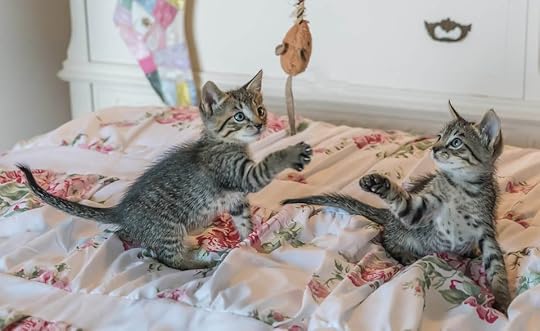
Published on May 08, 2018 04:00
May 1, 2018
celebrating children, pets, books & kindness
 This is a great week to celebrate -- I recently wrote and published a new children's book, and the timing couldn't be better. It’s Children’s Book Week, and next week is Be Kind to Animals Week. (Additionally, Monday, April 30 was Adopt a Shelter Pet Day).
This is a great week to celebrate -- I recently wrote and published a new children's book, and the timing couldn't be better. It’s Children’s Book Week, and next week is Be Kind to Animals Week. (Additionally, Monday, April 30 was Adopt a Shelter Pet Day).From Lassie and Max the dogs, to Dewey and Skippyjon Jones the cats, animals have played a role in books, TV, and movies for generations. Do you remember your favorite animal book, TV or movie from childhood?
Mine was “Follow My Leader,” written during the 1950s but still a part of school libraries during the 1960s and 1970s when I grew up. The primary human character, Jimmy, becomes blind after a firecracker incident. He learns to rely upon a German Shepherd guide dog named Leader, who breaks down Jimmy’s emotional walls as well as helps escort him in this new reality of blindness.
For eons, animals have helped people, being used for hauling, protection, hunting, and rodent control, among so many other situations. These days, animals are used for therapy, in military service, as guide animals, and search and rescue animals, as well as companionship. Children especially respond well to dogs, cats, and other animals. Reading about animals is also a joy for many children, and so this week we celebrate kids, books, kindness and pets in honor of Children's Book Week and Be Kind to Animals Week.
As a writer of inspirational pet stories for children and adults, it’s my joy to share the wonder of animals, especially companions like dogs and cats. And, it’s my special pleasure to announce the publication of my newest children’s book “Jeremiah Finds a Home,” the story of my rescued, adopted Shih Tzu, Jeremiah. He lived in a puppy mill for three years, was rescued by Hearts United for Animals in 2016, and was adopted by me and my husband in late 2017. Although it took time for him to adjust to his new home and very own family, Jeremiah is a joyful dog who makes us all smile. My goal is to teach children and families about puppy mills, the importance of rescue, and the joy of pet adoption. The book is available on Amazon, and you can learn more about the story (told non-graphically) on my website.
There is much cruelty in the world, toward people, including children, and to pets. Kindness must be taught and modeled to kids. We as adults can, and should, do it. Pets do showcase kindness, and exposing children to therapy pets and read-to-the-dog programs at schools and libraries will help instill kindness as well. Books can also be a catalyst of kindness through subtle messages woven into the story. Just as Leader the dog in “Follow My Leader” showcases kindness toward the blind boy, Jimmy, or Lassie to Timmy, children learn compassion, kindness, friendship and other great lessons from pet books (and movies – think of how the animals helped each other in the “Homeward Bound” story).
As we celebrate children, books, pets, and kindness these next few weeks, model positive traits to your kids and read to them stories that showcase those characteristics, too. We can all impact the lives of children and the lives of animals in positive, caring ways.
What was your favorite animal book, movie or TV show and why? Leave your thoughts in the comments below.
 My pets are characters in many of my stories. In the new book about Jeremiah, the Shih Tzu, the story is told from the dog's point-of-view. Mary, my cocker/ springer mix, has two books about her, including visiting a ranch and encountering different animals there.
My pets are characters in many of my stories. In the new book about Jeremiah, the Shih Tzu, the story is told from the dog's point-of-view. Mary, my cocker/ springer mix, has two books about her, including visiting a ranch and encountering different animals there.
Published on May 01, 2018 17:00
April 23, 2018
Super pets: Vote for Hero Dogs This Week
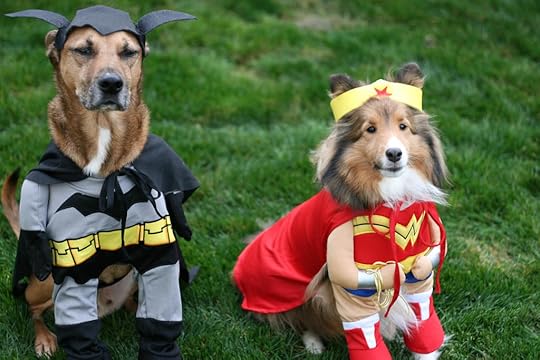 You’ve likely read about or heard about them, one may even live in your home. These are the heroes, superheroes, in fact, but only one that I know of made it onto the TV/Movie screen: UnderDog. What a name – not SuperDog, BatDog, or AvengerDog, the name was UnderDog – not much of a super hero name.
You’ve likely read about or heard about them, one may even live in your home. These are the heroes, superheroes, in fact, but only one that I know of made it onto the TV/Movie screen: UnderDog. What a name – not SuperDog, BatDog, or AvengerDog, the name was UnderDog – not much of a super hero name.Yet, for those animals who save their humans’ lives, these pets are superheroes, such as the parrot who saved a child from choking and a cat who saved her family from carbon monoxide poisoning. Earlier this year, a German shepherd dog was badly beaten and shot several times protecting a teenager from home intruders; miraculously, the dog survived his injuries, and received a commendation.
From overseas military combat dogs like Layka to cats like Schnautzie from Montana, pets save lives, sniff out bombs and cancer, and find lost children. Hero pets lead the blind, bring smiles to hospital patients, help children read, and give people comfort during illness or grief. Lutheran Church Charities K-9 Comfort Dogs travel the country during times of trauma, such as hurricanes and school shootings. Our own pets provide comfort when we’re sick or stressed. A cold nose or warm purr soothes us, making our own pets our own personal heroes.
Every year American Humane presents the Hero Dog Awards, honoring canines who come to the rescue. These superheroes may be police, fire, or military dogs, lead the blind and help the deaf, serve as therapy animals in hospitals, or inspire us with their persevering spirits as emerging heroes. This week, American Humane allows the public to vote for the hero dogs which, later this year, will be recognized for their endeavors and awarded for their heroism. Cast your vote for the Hero Dogs of the Year by visiting this website: http://herodogawards.org/vote/. Voting closes on Wednesday, April 25.
Your dog, cat, ferret, or parrot may not have an award on the wall or shelf, may not have saved yours or a family member’s physical life, but most of us with pets recognize the joy and wonder of having a pet share our lives. Who is your hero pet? Leave a comment about why you feel your pet “rescued” you or, in your eyes and heart, is your hero. And, don’t forget to vote for the American Humane Hero Dog Awards!

Published on April 23, 2018 12:51



